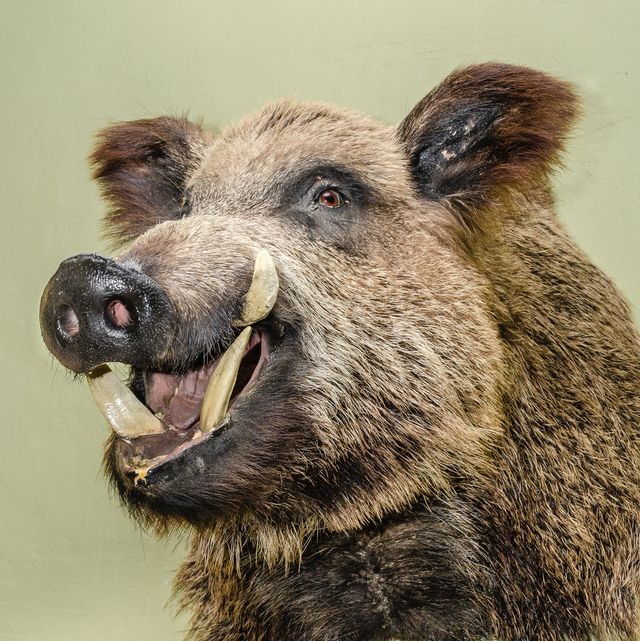In a surprising study, it’s revealed that wild pigs cause more annual human deaths than sharks. With an average of 19.7 fatal wild pig attacks per year between 2014 and 2023, compared to 5.8 shark attacks, the threat from wild pigs has been rising. The research also highlights the lack of public awareness about wild pig attacks, which are more deadly than those from sharks, wolves, or bears.
Mayer’s findings on wild pig dangers faced backlash, as many people dismissed the idea, but would agree on shark danger. In a later study with colleagues, Mayer published a report on worldwide wild pig attacks from 2000-2019, revealing 1,532 attacks and 172 human deaths in 29 countries. Most fatalities (88%) were non-hunting incidents, and 77% of victims died from blood loss. Daylight attacks (86%) predominantly involved male adults (84%), with farm workers making up 38% of victims. Most attacks were by single pigs, except for 20 cases with multiple pigs, and the average pig size in these incidents was 240 lb.
Despite being surpassed by other animals like tigers, Indian elephants, Nile crocodiles, and venomous snakes in terms of human fatalities, wild pigs are still more dangerous than bears, wolves, and all shark species combined, according to Mayer. He emphasizes that wild pigs are often misunderstood as less dangerous than they actually are. Attacks by these animals can be gruesome, with 55% of victims dying on the scene. Wild pigs’ tusks, which operate like a combination of nails and razors, cause severe damage when they slash around the waist to knee area of humans. The tusks’ sharpness comes from their structure, with 60-70% of the canine enclosed in the jaw and 1-4 inches exposed outside the socket. The constant movement of a boar’s mouth hones the lower tusks into effective cutting tools.
Mayer highlights that boars create rough-edged slashes and gouges with their tusks and can break bones using powerful bites. Sows have smaller tusks, leading them to bite rather than stab or slash. Fatal attacks are often caused by males with large canines, targeting the inner leg and femoral artery. These animals can run up to 30 to 35 miles per hour. Most fatal wild pig attacks are due to defensive behaviors, but Mayer documented seven instances where the pig’s behavior appeared to be predatory. Although rare, unprovoked attacks do occur, as evidenced by a case in India where a young girl was carried away by a wild pig. In another instance from 2019 in Texas, a woman endured one of the worst attacks on record.
At around 7:45 a.m., law enforcement officers arrived at the property where they found Rollins, a 130-lb woman, lying on her back on the well-maintained lawn, 6 feet away from her Chrysler. Her clothing was torn, with her shirt, jacket, pants, and shoes missing. Rollins’ body displayed a horrifying array of injuries, including bites, puncture wounds, and lacerations. Large portions of her legs were devoid of flesh, which had been consumed. Sheriff Brian Hawthorne, with 35 years of experience in southeast Texas, was shocked by the scene, describing Rollins’ body as “annihilated” and “mutilated.”
The elderly couple who owned the property mentioned they had significant wild hog issues in the rural and partially wooded area. They also had two dogs, a 14-year-old Labrador, and a dachshund. The Labrador was friendly towards the deputies.
The incident was classified as an “unknown death,” triggering a criminal investigation. Sheriff Hawthorne awaited the autopsy results before making a judgment. The autopsy confirmed the severity of the attack, with Rollins bleeding to death due to multiple injuries across her body. The pathologist found no canine bite marks, indicating that the attack was not by dogs. Instead, there were various bite and tusk marks from wild hogs, which were sent for DNA testing. The results confirmed the involvement of wild hogs in the attack.
Sheriff Hawthorne speculates that Rollins might have exited her car as wild pigs approached the house, initially obstructing their path before becoming the center of a feeding frenzy involving multiple adult hogs and juveniles of different sizes. He compares the scene to the feeding frenzy of domesticated pigs when given food or the behavior associated with sharks during feeding time.
The 2019 wild pig attack in Chambers County aligns with Mayer’s research and findings. Sheriff Hawthorne, despite wishing for an alternative cause for Christine Rollins’ death, acknowledges the overwhelming evidence pointing towards wild hogs. He emphasizes the danger posed by these animals, stating that they are problematic and should be treated with caution.
Many fatal pig attacks go unnoticed, with over half occurring in India and a smaller percentage in China. The U.S. has recorded only six such fatalities in the past 100 years. However, the attack rate is increasing globally, and media coverage is catching up, providing more data. Mayer believes that there were more wild pig-related fatalities in the U.S. in the past century, but they were not documented.
In the early 1970s, when Mayer started discussing wild pig expansion, he faced skepticism. Fast forward to today, with the U.S. wild pig population reaching 7 million and causing $1.5 billion in annual agricultural damage, according to USDA estimates, people now take Mayer’s warnings about wild pigs seriously. He hopes that his research raises awareness and encourages people to be more cautious around these animals, as wild pig attacks are rarer than shark attacks but still pose a significant threat.





